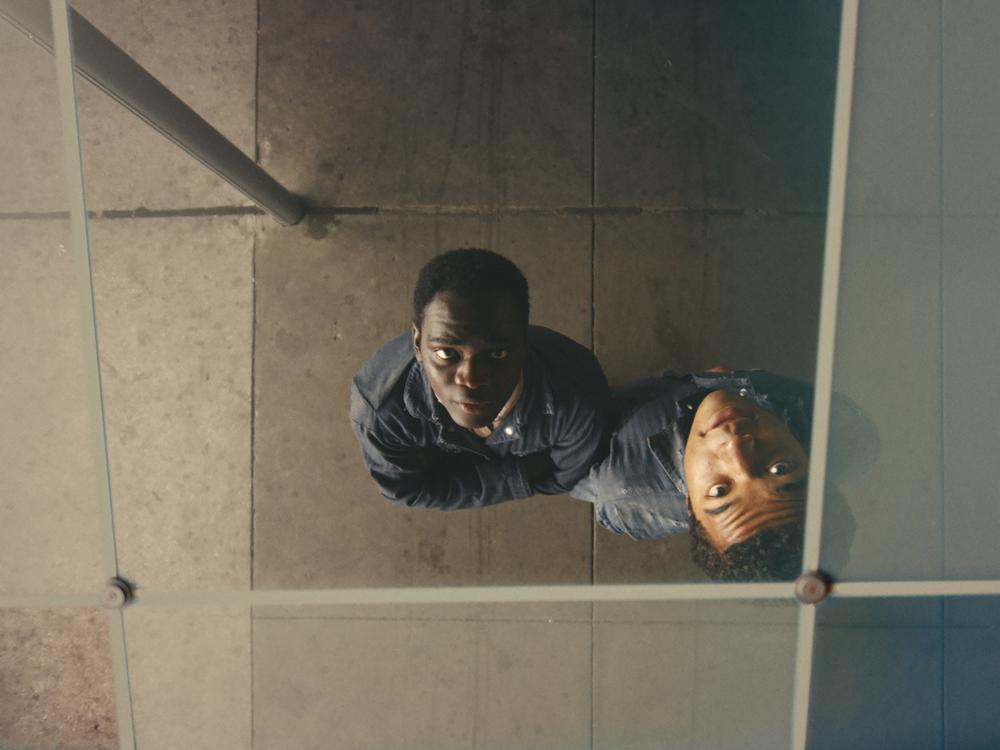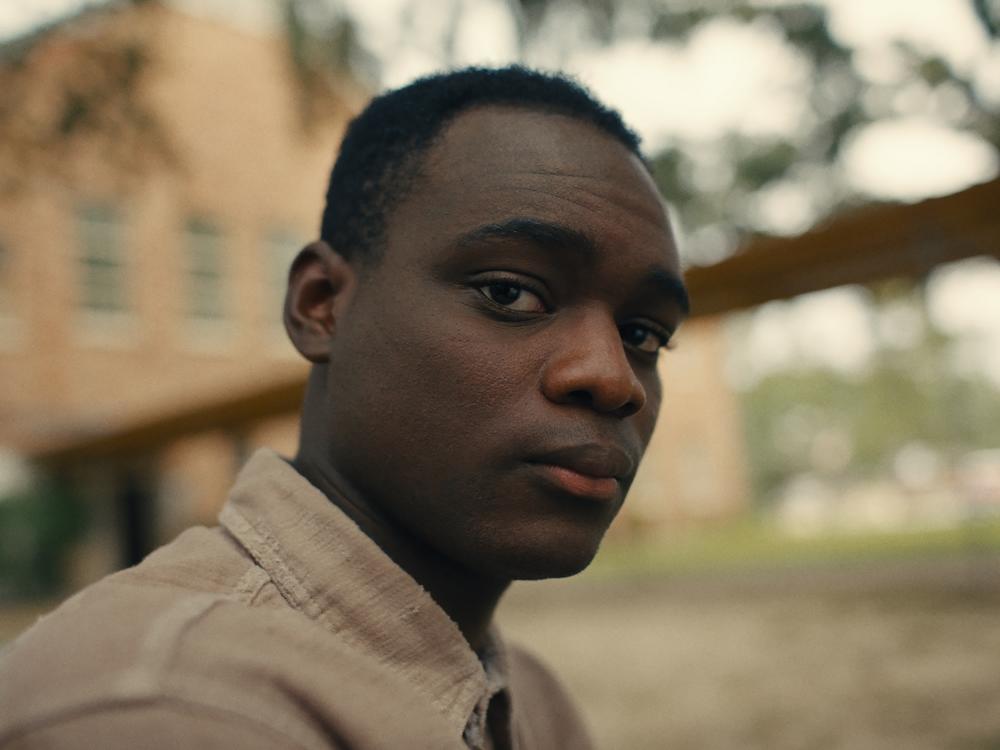Section Branding
Header Content
'Nickel Boys' establishes a new way of seeing Black characters on screen
Primary Content
One thing about a period piece is that no matter how brilliantly executed it might be or how relevant to the present it may feel, simply setting a story in the past can't help but keep the audience at a kind of distance. The costuming and production design, the mannerisms, the historical markers – they're all reminders that what is being seen is of a different time.
Nickel Boys is filmmaker RaMell Ross' first narrative feature, and it's a period piece primarily situated in a cinematic landscape depicted in an untold number of films: the 1960s Jim Crow South. An ambitious adaptation of Colson Whitehead's Pulitzer Prize-winning novel, it shows Black characters existing with the many indignities of Jim Crow against the backdrop of the Civil Rights Movement.
Despite the familiar setting, Ross inventively remixes iconography and history to come up with something so distinct it's (almost) ineffable.
In doing so, he manages to remarkably chip away at, if not fully erase, the inherent temporal divide between his subjects and the viewer.
Elwood (Ethan Herisse) is coming of age in Tallahassee, Fla., raised by his kind and doting nana Hattie (Aunjanue Ellis-Taylor). Inquisitive and well-mannered, he has an opportunity to receive a better education at a nearby technical college, but those dreams are dashed when he's falsely accused of being an accomplice to a crime and sent away to a segregated reform school, Nickel Academy. Whitehead based Nickel on the Dozier School For Boys, a notorious Florida reform school with a long history of reported abuses. Dozens of unmarked graves have been found on the now-closed school's campus.
Once at Nickel, Elwood hears whispers about what happens to the Black boys who don't "reform" to the liking of the disciplinarians in charge. A bit sheltered, he believes he can handle the environment so long as he keeps his head down, but he eventually comes to understand these abuses first-hand. He befriends Turner (Brandon Wilson), a swaggering kid from Houston who's already resigned to the harsh realities of racism and inequality. Their bond in such an inhospitable place has life-altering consequences for them both.
The first and most striking aspect of Nickel Boys is Ross' composition: the majority of the film is shot from the first-person perspective of either Elwood or Turner. Deploying this technique in feature-length form isn't new; look as far back as 1947's detective noir Lady in the Lake for an early example. But here it takes on a unique dramatic utility, carving out a new cinematic approach to not only looking at but seeing Black characters on screen. The opening montage is a marvel: It captures snapshots of Elwood's early childhood memories through low-angle shots, which might lovingly frame Hattie looking down at him as she decorates a Christmas tree, or eye-level close-ups, which at one point reveal a quick glimpse of his reflection slipping past in the metal hotplate of her clothing iron.
Not every moment like this reaches the heights of its creator's ambitions. At times early on, a stilted exchange of dialogue would call away too much of my attention to the mechanics of Ross' methods. But those moments are rare and don't overshadow what the filmmaker accomplishes here; once Elwood and Turner connect at Nickel, the energy revs into motion, with Wilson giving a compelling performance as someone far too young to already be as world-weary as he is.
When the first-person perspective is working most effectively, Nickel Boys radically fulfills the late critic Roger Ebert's observance of movies as "empathy machines." When Turner encounters Hattie for the first time, she's been denied access to visit Elwood at Nickel. Ellis-Taylor, reliably arresting in whatever role she takes on, registers Hattie's disappointment and longing to see her grandson with such intensity that she pours that heartache and warmth directly onto Turner. He's the closest proxy she has to being with Elwood in that instance – and by extension, all those energies are poured onto us, the audience.
Several years ago Ross shared with Filmmaker Magazine his production manifesto for his debut feature, Hale County This Morning, This Evening. Among his itemized goals: "to instantiate a way of looking"; to "participate, not capture; shoot from not at." Those who've seen this striking 2018 nonfiction film probably understand that this aim came to fruition; Hale County is a challenge to define and describe, an experimental work about the Alabama community Ross moved to in 2009, told through nonlinear clips, archival footage, and impressionistic montage. It privileges immersion over mere documentation, and offers a compassionate view of the Black South, present and past.
Out of necessity, Nickel Boys' narrative arc is more conventionally shaped than Hale County, but there's no doubting both films were borne from the same visionary. Beyond imagining the camera as the eyes of Nickel Boys' protagonists, Ross weaves in archival footage and imagery, and puts Elwood and Turner in direct conversation with scenes from the 1958 "social problem" film The Defiant Ones, starring Sidney Poitier and Tony Curtis as chained fugitives on the run across the Deep South. Curtis' character, of course, is a racist at the film's beginning, but by its end, the two become bonded in their contempt for authority, racism be damned. The movie was scathingly observed by James Baldwin in The Devil Finds Work, who wrote that it embodied a bewildering fantasy: that "the ordeal of black-white relations in America … has brought us closer together than we know."
Nickel Boys is a rebuke of such simplistic overtures, which are usually how Hollywood has attempted to depict the unique scourge of American anti-Blackness, from The Defiant Ones to, more recently Green Book. As Elwood and Turner's time passes at Nickel Academy, Ross' camera begins to slip in and out of the future, where details incrementally reveal the boys' fates decades later. In these sequences, the first-person perspective breaks off into something more abstract, so that the viewer is no longer certain who exactly is doing the looking, and is perhaps not so clear on what is being looked at, either.
What is certain is that this is no ordinary story of defiance in the face of cruelty, or of the trauma of bigotry; there's bittersweetness, beauty, and above all, a deep connection between Elwood and Turner in spite of the cruelty and bigotry. To see Nickel Boys is to experience the collapse of expectations for how these kinds of stories can be told.



